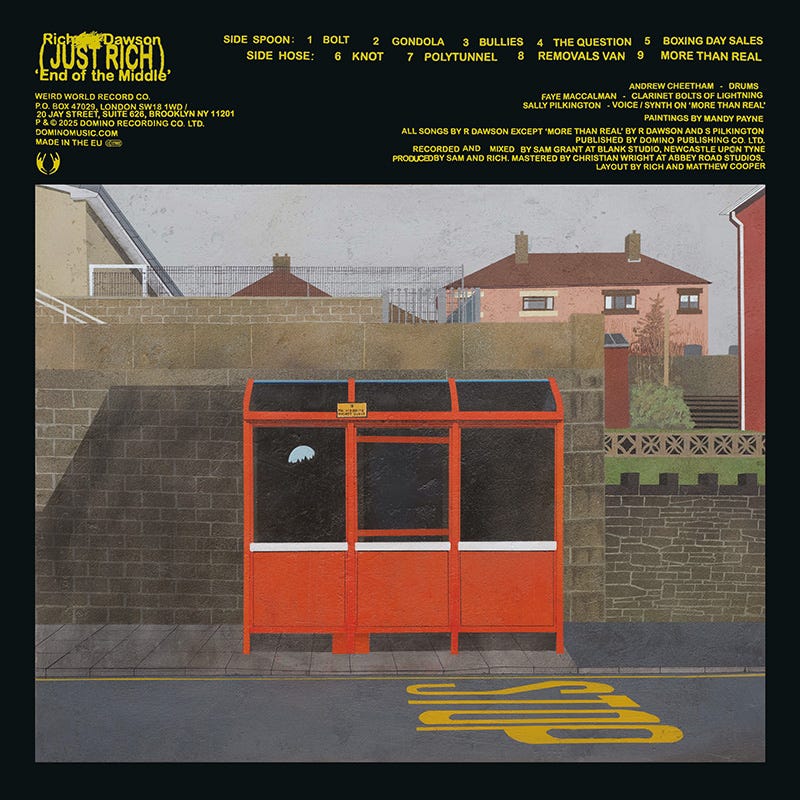At Least I Have a Head
How Richard Dawson's new album has captured the eternal anguish of middle age
There’s been a lot of boomer bashing over the last decade or so, and I’m sorry to dredge up old rivalries and sling another cruise with Jane Mcdonald in the pension pot of Brexit means Brexit, but my parents’ generation even struck gold with their midlife crises. I’m realising this now, at the age of 42; one year younger than Newcastle folk musician Richard Dawson currently is, a fact I cruelly forced him to admit late last year when we spoke for the Loud And Quiet podcast Midnight Chats.
In the ‘80s and ‘90s, as our parents reached the age we are now, the cartoon drawing of a midlife crisis – almost always a depiction of the male office manager – featured a sports car, a toupée and an affair with a much younger secretary. Crucially, a midlife crisis in 1995, say, was about refusing to accept your age. Cover up that thinning hair; buy the Porsche 911 that hung airbrushed on your adolescent bedroom wall; seduce a younger woman to feel like a younger man.
Millennials appear to have jumped the gun on the modern equivalent of the toupée, but there’s little left in the bank for the Porsche after you’ve been to Turkey for a hair transplant bought on finance. A generation without savings, our approach to age acceptance is to be anti-boomer to a fault: rather than insisting we’re still young and vital, we aggressively remind ourselves and others just how ancient we’ve become, loudly announcing our ages at opportune moments that often hold no significance to the conversation. “Could you imagine, me wearing that at my age?!”. “Could you imagine, me going to a party that starts at that time at my age?!”. “Could you imagine, me enjoying the good weather at my age?!”. To one another, our favourite sentence is: “I was the oldest person there by about 20 years.”


